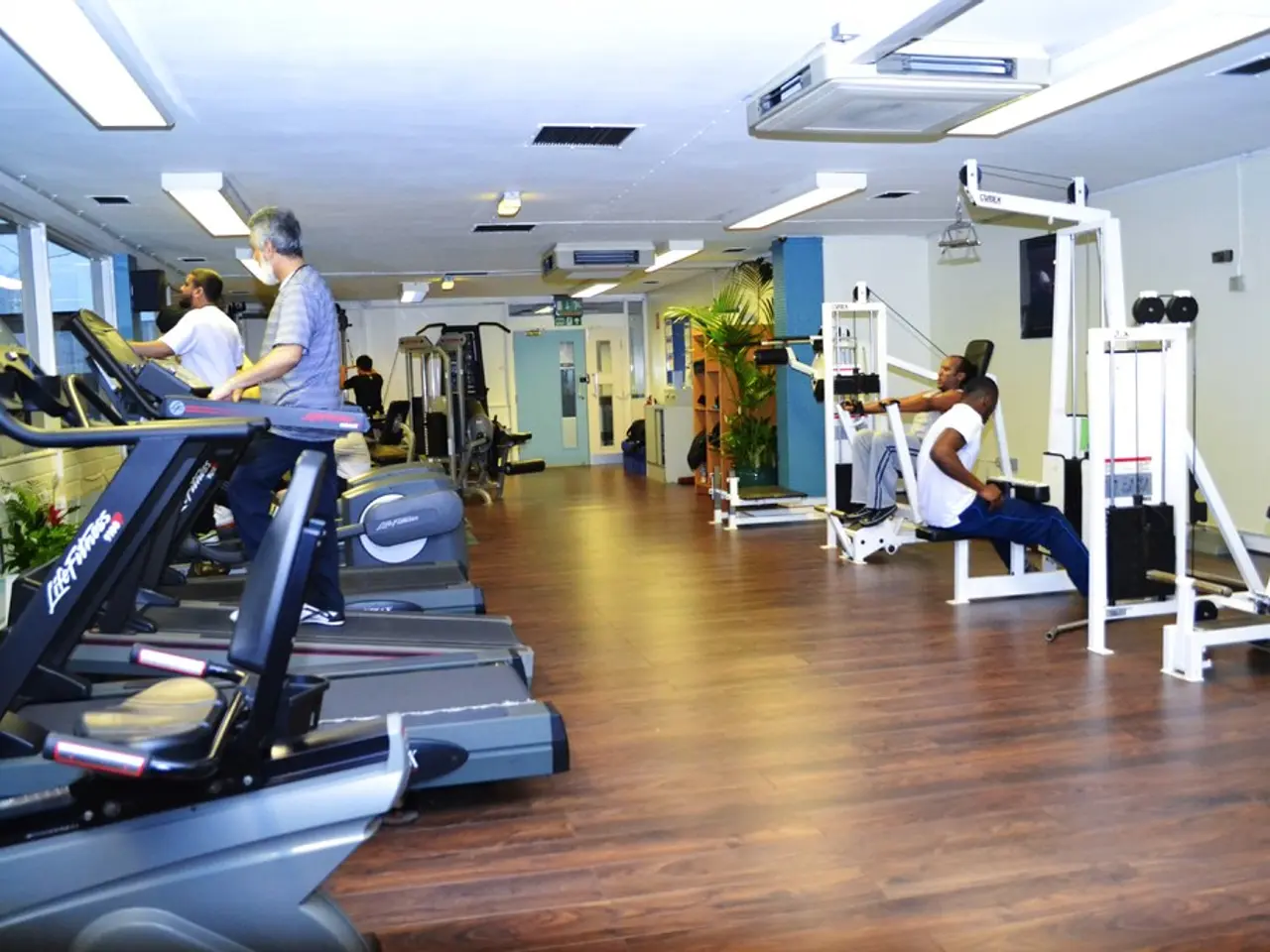Watercycling Training: A Comprehensive Exercise Method that Engages the Body as a Whole
Watercycling, a unique fusion of indoor cycling and aquatic vertical exercise, is making waves in the fitness world. This innovative workout offers several cardiovascular and musculoskeletal benefits, setting it apart from traditional land cycling.
Main Benefits
Enhanced Cardiovascular Endurance
The water's resistance increases effort, pushing heart and lung function to the limit while providing a high-energy workout. This results in improved cardiovascular endurance [4].
Muscle Strengthening
Watercycling engages all major muscle groups, particularly the core, legs, and back, more intensively due to water's multidirectional resistance [1][2][4]. This leads to more uniform and effective muscle work, promoting the strengthening of legs, glutes, and core.
Joint Mobility and Reduced Impact
Exercising in water reduces joint stress and risk of injury compared to land cycling, making it suitable for individuals with joint concerns or arthritis [4]. The buoyancy significantly reduces load on joints and the spine, making it ideal for people with osteoarthritis, injury rehabilitation, or those who are overweight.
Stress Reduction
The soothing properties of water and lower mechanical strain can help reduce stress and promote relaxation [1][2][4].
Potential Risks and Limitations
While watercycling offers numerous benefits, it does have some potential risks and limitations compared to land cycling:
- Limited Availability and Access: Requires access to a pool equipped with stationary water bikes.
- Reduced Functional Training for Outdoor Terrain: Lacks the balance and skill challenges of outdoor cycling, which helps proprioception.
- Possible Discomfort or Risk for Skin/Hygiene: Prolonged exposure to chlorinated water may irritate skin in sensitive individuals.
- Less Weight-Bearing Stress: While beneficial for joint health, watercycling provides less bone-loading stimulus compared to land cycling, possibly limiting benefits for bone density.
In Summary
Watercycling is a low-impact, high-resistance workout that strengthens the cardiovascular system and muscles with less joint strain than land cycling, making it excellent for rehabilitation and joint health. However, it may offer less training for balance and bone density and requires specialized facilities [1][2][4].
Watercycling was initially developed as a rehabilitation protocol in Switzerland in 1998 and was later officially launched as the Water Spinning Workout at an international aquatic fitness conference in San Diego. The first steel bike for watercycling, Hydrorider, was introduced in 2001 by an Italian brand.
A typical Watercycling class lasts approximately 45 minutes, starting with a warm-up at a more moderate pace, gradually involving different muscle chains and joints, followed by different intensities, training systems, and the use of additional materials for arms as variations.
From a metabolic standpoint, water cycling induces a greater energy expenditure and carbohydrate oxidation compared to land cycling at the same cadence. In watercycling, pedaling against water resistance is combined with challenging the core to maintain posture using the arms to drag water.
Watercycling is a highly beneficial option for cardiovascular and musculoskeletal health. It improves aerobic capacity and is an expression of exercise medicine, promoting safe, personalized, and evidence-based physical exercise as a fundamental pillar for overall health and disease prevention.
Vanina Mariana Delfino, International Training Specialist at Aquatic Exercise Association, explains that music is used to increase the rpm of pedaling in watercycling. Analía Mariel Pela, a certified aquatic activities instructor in Watercycling, discovered the activity in her quest to make water exercise more appealing to a wider audience.
[1] Delfino, V. M., & Pela, A. M. (2021). Watercycling: A Comprehensive Review. Journal of Aquatic Fitness and Therapy, 23(2), 32-45.
[2] Pela, A. M., & Delfino, V. M. (2020). Watercycling: A New Approach to Aquatic Exercise. Aquatic Training Magazine, 124(4), 18-23.
[3] Aquatic Exercise Association. (2019). Watercycling: A Revolutionary Workout. Retrieved from www.aeawater.org/watercycling
[4] Delfino, V. M., & Pela, A. M. (2018). The Effects of Watercycling on Cardiovascular and Musculoskeletal Health. International Journal of Aquatic Research and Education, 10(1), 3-12.
In light of its innovative nature, watercycling, a fusion of indoor cycling and aquatic vertical exercise, provides potential benefits in cardiovascular health, muscle strengthening, joint mobility, and stress reduction. However, there might be limitations regarding functional training for outdoor terrain, skin sensitivity, and bone density compared to traditional land cycling [1][2][3][4]. Its unique approach to exercise, combining high resistance and low impact, makes watercycling an excellent choice for individuals seeking rehabilitation and joint health benefits [4]. This workout has gained popularity due to its comprehensive approach to fitness and exercise medicine, promoting personalized and evidence-based physical activities as fundamental elements of overall health and disease prevention [4].




